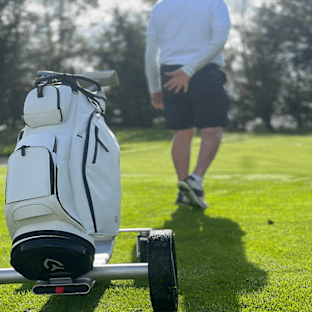* * *
We are SO INCREDIBLY OVERJOYED that we have met our Indiegogo fundraising goal!! Thank you SO much to all of our wonderful contributors, you are amazing! We are so grateful to all of our supporters who have helped us reach our first goal. We still have about $9,000 dollars to raise through grants and sponsorships, so contributions that come in during the next 2 days will help us reach our overall goal. Thank you so much!!!
* * *
Rediscovering the Great American Prairie:
Educate, Engage, Create
![]()
The expedition:
Traversing the Great Plains of North America by horseback, our project will bring public attention to the critical role of grassland conservation in North America today. Through education and outreach, from both scientific and artistic perspectives, we will engage a wide audience in an investigation of the issues that affect this vitally important region. We aim to inspire regional scale, long-term conservation and sustainable land use practices by articulating the richness and beauty of the landscape through film, photography, and writing. Inviting discussion with local ecologists, land managers, ranchers, farmers, activists, artists, and the public alike, our journey will dive into the region’s rich historical past, shed light on its present condition, and help inspire creative possibilities for its future.
The Impact
You are supporting a creative approach to a complex problem. Our multi-faceted project merges education, outreach, art, science, and, of course, horses in a way we are certain will excite a deeper understanding, appreciation, and engagement with the natural world and our place within it.
The region: Why the Great Prairie?
![]()
Temperate grasslands are the least protected biome on earth, with less than five percent formally protected world-wide, compared with fifteen percent of all terrestrial biomes on average.[1] Within the great plains of the United States, the central tall grasslands ecoregion has the highest percentage of habitat loss of any terrestrial ecoregion on the continent with 99% habitat lost. Nearly all of the tallgrass prairie ecoregions were converted to agricultural use during the 20th century, making the protection of remaining natural areas and the restoration of degraded landscapes of vital importance. (Photo by Diane Hargreaves)
[1] Hoekstra, Molnar, et al. 2010, The Atlas of Global Conservation
Objectives:
1) We will produce a documentary film that will share the beauty of the landscape and the perspectives of the people we meet along the way. It will be used as an educational tool to promote greater local and national involvement in determining the future of an ecologically imperative region.
2) We will invite discussion along the way with a diverse number of stakeholders ranging from ranchers and farmers to conservation organizations, writers, artists, and middle schools. We will discuss the importance of conservation in the region, explore the complexities of its current state, and spearhead dialogue about creative solutions and approaches to a sustainable future in the region.
3) Along the way we will maintain an interactive website, where the public can follow our progress on the road, access articles, photography, stories, poems, and short film clips made along the way.
4) After we complete the ride, we will present our film at high schools, universities, and other groups, giving talks nationwide promoting conservation of this enormously important region and challenging communities to become involved in its story. Our first presentation will be hosted by Colorado College's State of the Rockies Project at their annual lecture forum.
5) After completion of the ride, we will exhibit our work at galleries around the country, combining art, conservation, community, and education to deepen ecological understanding and appreciation of the natural world. Our first stop will be at the Smokebrush Foundation’s art gallery in Colorado Springs, CO.
Mode of Transportation: Why Horses?
![]()
By using horses as our mode of transportation, we will pay homage to the cultural heritage of the landscape and the historic importance of horses in the region. This is a landscape that is often passed through at 75 mph, or looked down upon from 30,000 feet in the air; we want to slow down. We will connect ourselves intimately to the land through which we are traveling: its fertility, the threats it faces, and the urgency of its conservation. Horseback travel will capture the imagination of the public, inspiring those we encounter to envision the vastness of both the land and its opportunities.
The route:
![]()
Team Members:
Robin Walter:
Robin graduated from Colorado College in 2012 with a major in English literature and creative writing. Growing up, she spent most of her time at the stables or in a saddle, riding the trails in Colorado Springs and the Big Horn Mountains in Sheridan, WY. Most recently she was in the Aysén region of Patagonia managing the greenhouses for Conservación Patagonica as it converts a sheep estancia into a future Chilean National Park.
![]()
“Becoming more and more familiar with the conservation work underway in Patagonia, I am inspired to pursue similar work closer to home. With a background in poetry, inquiry is at the heart of how I relate to the world. I am keenly interested in discovering and articulating the subtleties of our relationship with people and place, uncovering patterns that are at once familiar and surprising, and in engaging the reader in an intimate reflection of their relationship to the subject explored. I am excited about this project because it will provide me with a unique occasion to do just that, and in a landscape that is absolutely crucial to conservation efforts in North America. I have a life-long respect for nature and the outdoors, a zeal for stories and the craft of writing, extensive experience with photography, a long history with horses, and I have a deep interest in food and agriculture. This project takes each of these interests, and combines them in an exciting and imaginative way.” –Robin
Sebastian Tsocanos:
Sebastian was born in the coastal forests of Connecticut. Feeling the call to move west, and explore more deeply another region of America, Sebastian studied Environmental Science at Colorado College (’12). Completing his thesis on the rare and threatened remnants of tallgrass prairie in eastern Colorado, Sebastian fell in love with the American prairie, coming to appreciate its beauty and the myriad threats it faces. Since graduation, Sebastian has worked as a natural resources field technician in El Paso County, CO, on a produce and dairy farm in western Colorado and on a grassland restoration project in Chilean Patagonia.
![]()
“I was first acquainted with the Midwestern landscape on long road trips across the country with family and friends. Driving across the plains, it was impossible not to notice how transformed the landscape is, mainly for agricultural purposes, whether plowed for corn and soybeans or heavily grazed by cattle. What was harder to notice was the wildlife that remained: along the roadways, along the railroad tracks, in the small state and local parks, national grasslands set back from the highway, and on the few well cared for farms and ranches scattered through the country, host to the rapidly disappearing native plants and animals that barely hang on in these islands of refuge. It was also hard to see the people that remain in the towns, so many driven out by farm mechanization and consolidation, when you only see the rest-stops and major cities along the interstate. I always wanted to stop and explore those scattered communities, and meet the people for whom the prairie is truly home. As an advocate of sustainable agriculture, I also am deeply interested in exploring the potential options for the future of agriculture in the region, and the work of practitioners already underway. Driving through this wide stretch of country, I always want to slow down, get off of the main roads, to really know the place. This project excites me because it is an opportunity to do that in a very special way, combining my long time love of horses and travel with my passion for prairie conservation, sustainable agriculture, and creative forms of community development, and to share that experience with others.” -Sebastian
Sebastian and Robin are both Wilderness First Responders, have extensive risk-management skills developed over years of backcountry travel, over 18 years of equestrian experience each, and Sebastian completed the Equine Learning Center of America’s Equine First Aid Course.
Partners and sponsors:
![]()
We are teaming up with Colorado College’s State of the Rockies Project, which aims to increase public awareness of environmental concerns in the Rockies states. We will present at the Rockies Project’s annual lecture forum, screening our documentary film and sharing our perspectives at Colorado College. We will be working closely with their research team and provide periodic updates on our progress and findings from the road.
Major Destinations and Contacts:
The Great American Prairie Reserve
The Great American Prairie Reserve is one of the most ambitious conservation projects in North America today. Find out what they're up to when we kick off our ride at their homebase in Glasgow, MT.
Wes Jackson at The Land Institute, Salina, Kansas
Wes Jackson is president and co-founder The Land Institute and has been predicted by Life Magazine to be among the 100 “most important Americans of the 20th century." Want to know why? Check out our video!
Elizabeth Dodd, Poet and Distinguished Professor at Kansas State University
Elizabeth Dodd is a celebrated author of poetry, creative nonfiction and ecocriticism. Her work examines relationships between humans and the natural world. Her book In the Mind’s Eye: Essays Across the Animate World, won the Best Creative Book Award from the Association for the Study of Literature and Environment in 2009.
John W. Head, Wagstaff Distinguished Professor of Law at The University of Kansas Law School
John W. Head's recent work focuses on international legal regimes for the protection of native prairies and grasslands. His most recent book Global Legal Regimes to Protect the World’s Grasslands (November 2012) treats international efforts in grasslands preservation.
Other Ways You Can Help
Help us make some noise about the project! You can post our indiegogo campaign on your facebook, tweet about it, and tell your friends, family and all of your communities about it.
If you are involved in or know about an innovative project along our route that would be of interest to the project, let us know! We'd love to check it out.
If you live along the route, or have family and friends who do and might be interested in hearing what we are up to, we'd love to stop in for the night. You can contact us at RediscoverThePrairie@gmail.com If you are interested in donating equipment or becoming a sponsor for the ride and the film, let us know!
If your gallery, school, college, or other group would like to host a presentation or exhibition, get in touch!
You can learn more about the project and follow us by visiting our website www.RediscoverThePrairie.org
Remeber to use the indiegogoshare tools and THANKYOU FOR YOUR SUPPORT!




























































